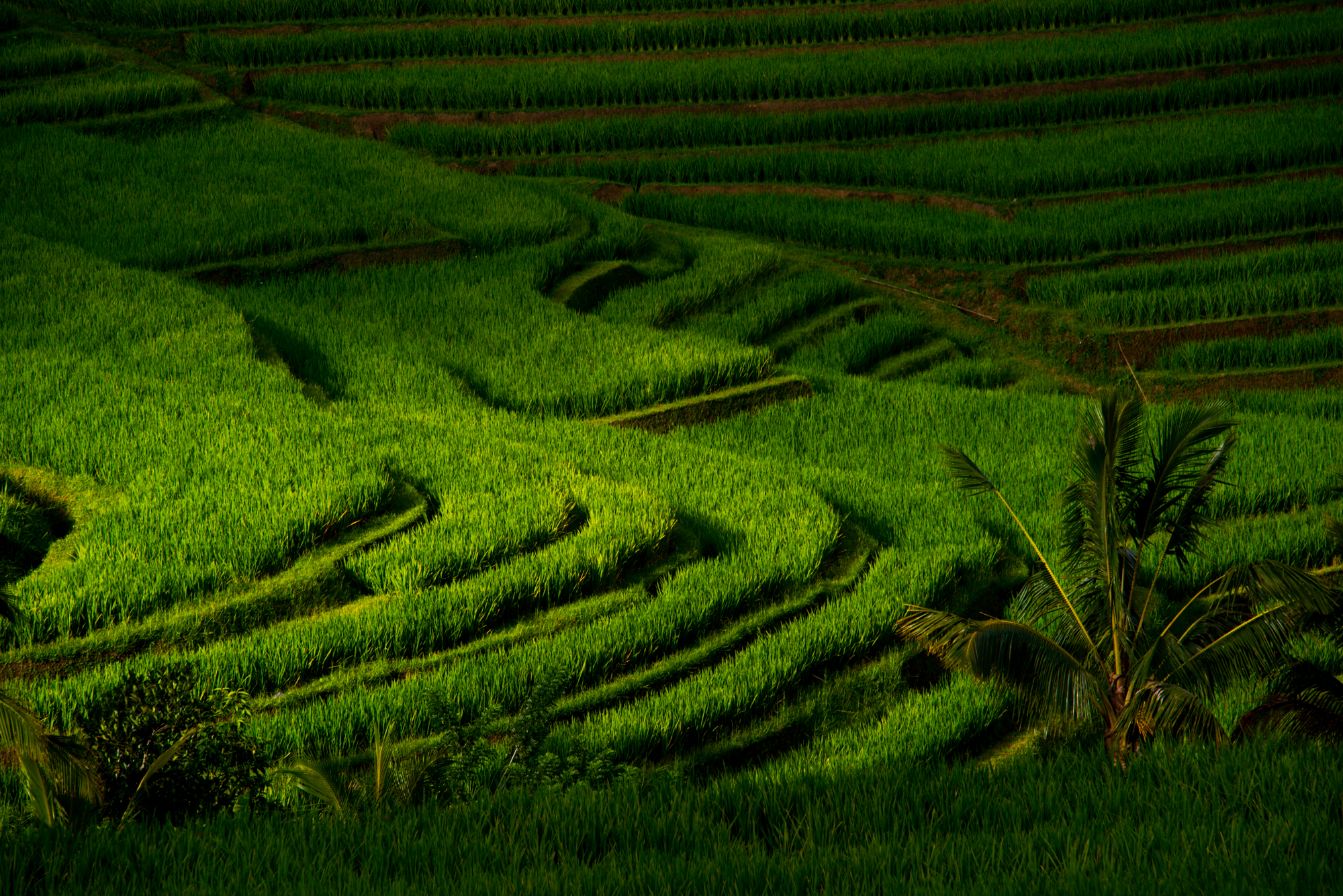Visiting East Bali
Away from the high-end tourist mecca of Kuta and Seminyak there lays a hidden gem, waiting to be discovered. The natural beauty of East Bali – its highland region and stunning coastline is a pleasant surprise, where the culture and traditional way of life remains largely intact.
Amed
This sleepy little fishing village which hugs the easternmost peninsular of Bali is a delight. Low-key guesthouses for as little as $10 a night up to boutique accommodation can be found amongst the alfresco seafood restaurants and locally owned small bars. Rated one of Bali’s top snorkelling areas, the coral gardens are teeming with tropical fish. Swimming in the delightfully clean ocean, albeit brackish in colour, makes your skin feel very soft – the volcanic bath water is an added health bonus. The colour of the water is a result of the volcanic activity in the region. It is well worth rising early to view the mesmerising dawn sight of the colourful triangular-shaped sailing outriggers returning to the harbour with buckets overbrimming with hauls of wahoo, dogtooth tuna and mackerel.
Mount Agung
Rising to the magnificent height of 3,142 meters Mount Agung is the most active volcano in Bali. Bali’s highest and holiest mountain and dwelling place of the Gods however, it is a challenge to climb. If you like trekking then you can chose from two starting points. The Besakih route takes you on the Western trail through the Besakih Temple, the largest temple complex in Bali, however it is the harder climb of the two. You can stay in a camp overnight, if you wish, and the final part of the ascent does involve a bit of scrambling, pretty much on all fours. Not for the feint-hearted. An easier option, which involves a four-hour climb, starts at Pasar Agung, close to Selat village. The climb has you ascending the southern peak of Mount Agung. Guides are available at Besakih and Pura Pasar Agung.
Wreck Diving – USAT Liberty Wreck
A half-hour drive North of Amed brings you to one of the most popular dive sites in Bali. Tulamban Village is the home of the USAT Liberty wreck. It was a cargo ship torpedoed by the Japanese in World War II. You can see almost every species of fish at this dive site from pygmy seahorses to huge parrotfish. Because of its popularlity, it is best to get there early in the morning, for optimum visibility. An added bonus is the early morning turtles sightings. For more information see diveconcepts.com
Titra Gangga Water Palace
A beautiful place to visit and take in the magical energy of ‘Old Bali’. An eleven-tiered fountain sits amongst carvings and statues and if you chose your time carefully (arrive before 8.00am) the peace and calm and beauty of this extraordinary spiritual complex will inspire and delight you. The locals consider the springs of Titra Gangga holy and there is a delightful designated wading pool, and how often do you get the opportunity (which is encouraged) to take a spiritual bath? Ornate Balinese dragon statues, ponds with large golden carp, a large banyan tree, colourful tropical gardens and beautifully groomed pathways and bridges are some of the features of this restful spiritual unique temple complex.
Sidemen
Walter Spies (1895-1942), the renowned painter from Ubud, found his way to this delightful village, located at 1,400 feet on the slopes of Mt Agung. He found, what many people today still find here – a traditional way of Balinese life, inspirational scenery, beautiful terraced rice fields (which use the ancient Subak water system for irrigation) and a melding of kindred spirits. It is lovely to wander the quiet country lanes and take advantage of the many hiking trails and walks. There are many spiritual retreat centres and unique places to stay, which offer painting and cooking classes to Balinese Language lessons and if you love weaving, there are many skilful weavers amongst talented masters of Balinese literature and Hindu theology. Check out the Nirarta Centre for Living Awareness – http://www.awareness-bali.com
Besakih Temple
It is known as The Mother Temple by the Hindu Balinese and is a truly wondrous sight. The entire temple complex (over 1,000 years old) comprises of 22 separate temples and with the backdrop of Mount Agung, it is a stunning pictorial vision you will not forget. Try and time your visit to coincide with a temple ceremony, as it will be alive with colour and prayer and festival atmosphere. This temple really is the temple of all temples in Bali and well worth the visit. It is best to get there before 9.00am (before the tourist buses arrive), as it is one of the biggest attractions in Bali. Be aware there are pesky hawkers and peddlers who will hound you, but don’t let that deter you from going. You must wear a sarong if there is a ceremony and if there is not you must at least wear a decorative sash. I would suggest getting one before you arrive. It is well worth the $5 fee to take an official guide. They speak excellent English, and will explain prayer rituals, show you how to pray and it will enhance your experience – plus they will keep the hawkers at bay.
The natural beauty of East Bali and the deep religiosity of the Balinese, which fuses with the oceans, temples, mountains and ancient terraced rice fields, make for a call to the East. A real delight awaits you.
Photos by David Metcalf
www.davidmetcalfphotography.com






